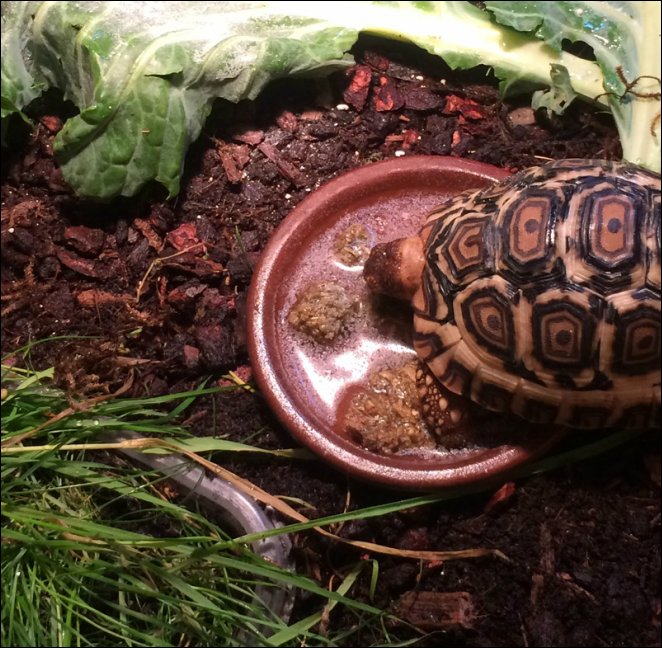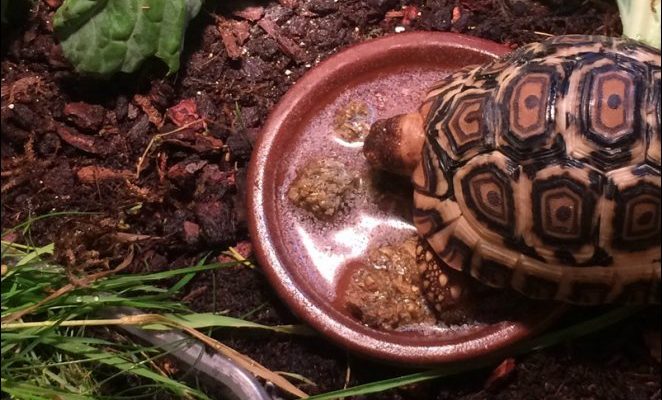
Feeding your leopard tortoise isn’t just about filling their bowl with the nearest salad mix. It’s about understanding their needs and providing them with a variety of foods that mimic what they’d eat in the wild. Think of it like crafting a gourmet buffet just for them—one that promotes health and happiness. With a little knowledge under your belt, you can create a delicious menu that will keep your tortoise healthy and satisfied.
Understanding the Leopard Tortoise’s Natural Diet
Leopard tortoises are native to the grasslands and savannas of Eastern and Southern Africa. In their natural habitat, they feast on a wide variety of grasses, wildflowers, and leafy greens. To replicate this in captivity, your tortoise’s diet should primarily consist of high-fiber and low-protein foods. This helps their digestive system function properly and mimics their typical foraging behavior.
Common foods in the wild include:
- Grasses like Timothy and Orchard grass
- Weeds such as dandelions and clover
- Leafy greens, including collard greens and romaine lettuce
- Occasional fruits like prickly pear and hibiscus flowers
By understanding what they would naturally consume, you can craft a diet that helps keep them healthy and active. Here’s the thing—while they may occasionally nibble on fruits, you want to limit this. Too much sugar can lead to health issues down the line.
Frequency of Feeding Your Leopard Tortoise
You might be wondering how often to feed your leopard tortoise. Generally, they should be fed every day in their younger years (under 5 years old). As they mature into adults, you can shift to feeding them every other day. Think of it like a routine that helps them grow strong and healthy.
When feeding, it’s best to offer small amounts. A good rule of thumb is to fill their food dish with enough to last about a day. If they eat it all, you can gradually increase the amount. On the flip side, if you notice leftovers, cut back a bit. Tortoises don’t have to eat to the brim every day, and overfeeding can lead to obesity.
Types of Foods to Include
Creating a balanced diet means mixing various food types. Here are some important categories to focus on:
1. Grasses and Hay: These should make up the bulk of your tortoise’s diet. Choose high-fiber options like Timothy hay or Bermuda grass. These help in digestion and prevent shell deformities.
2. Leafy Greens: Greens like kale, collard greens, and mustard greens are fantastic sources of nutrients. Just make sure to offer a variety so they don’t get bored.
3. Weeds: If you can forage safely, gathering wild weeds can be a fun treat for your tortoise. Just be careful to avoid pesticides and other chemicals in your yard.
4. Occasional Treats: Items like fruits and flowers can be offered, but sparingly. Think of them as dessert rather than the main meal. Too much can upset their stomachs.
Making sure you have a nice medley of these foods can keep your tortoise excited about meal times. Honestly, it’s like giving them a mini salad bar!
Hydration: Don’t Forget Water
Water might seem like a basic need, but it’s super important for leopard tortoises. They require fresh water at all times. You can offer water in a shallow dish that’s easy for them to access. It’s a good idea to change the water daily to keep it clean and free from any debris.
Sometimes, tortoises also enjoy soaking in shallow water. This helps with hydration and keeps their shell healthy. A good soak for about 15–30 minutes a few times a week can do wonders. Just make sure the water isn’t too deep, as they can accidentally tip over.
Supplements and Vitamins
While a well-rounded diet is key, sometimes our exotic friends need a little extra help. Supplements can play a vital role in maintaining their health. For example, calcium powder can be sprinkled on their food a couple of times a week. This is essential for proper shell growth and overall bone health.
You may also consider a multivitamin specially designed for reptiles. However, be careful not to overdo it. Too many vitamins can lead to toxicity. Following the package instructions or consulting with your vet is always a smart move.
Monitoring Your Tortoise’s Health
Keeping an eye on your leopard tortoise’s eating habits is crucial. If you notice changes—like decreased appetite or unusual droppings—this could signal a health issue. Make it a habit to observe their behavior during meals. A vibrant, active tortoise that eagerly nibbles at their food is a good sign.
You might also want to weigh your tortoise monthly to track their growth. If you notice significant weight loss or gain, it’s time to reach out to a vet that specializes in reptiles. Keeping tabs on their health will ensure your tortoise stays strong and vibrant for years to come.
Final Thoughts on Feeding Your Leopard Tortoise
Feeding your leopard tortoise doesn’t have to be a daunting task. With a bit of understanding and a willingness to learn, you can create a healthy diet that mimics what they’d find in the wild. Offering a mix of grasses, greens, and the occasional treat can help keep their diet balanced and delicious.
Remember to keep fresh water available at all times, and don’t be afraid to reach out for advice or ask questions if you’re unsure. Feeding your leopard tortoise is not just about nutrition; it’s about building a bond with them and ensuring they thrive in your care. Here’s to happy tortoise feeding!

